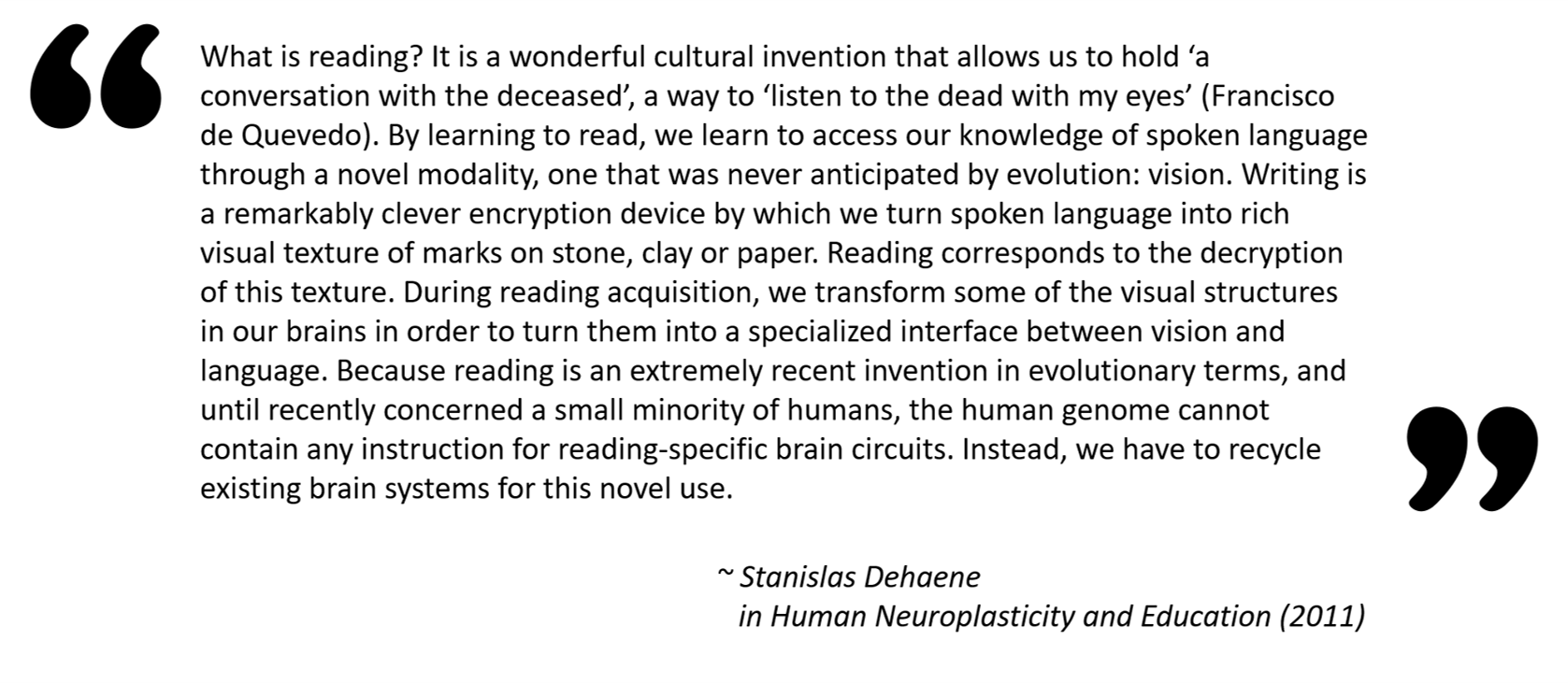You are here
Chapter 1: Introduction
Over the past four decades, science and education have come together to create a profound understanding of the skill we call “reading.” Modern technology in the form of PET scans and functional MRIs have allowed us to understand the neurological wonder of how the brain turns marks on a page into representations of spoken language and meaning. With this science has come a greater understanding of what it means to be a “reader.”
The studies of reading and readers have provided insight into what “good readers do” and what happens when the process of learning to read is impaired and becomes challenging and laborious. Our understanding of the relationship between oral language and reading has grown substantially, and although we do not have all the answers to the underlying causes of atypical reading development, we now have an ever-increasing amount of scientific knowledge about the nature of dyslexia. These efforts to comprehend how humans learn to read have expanded our understanding of effective instructional practices for all types of readers and for all types of reading. By better understanding what happens in the brains of typical and accomplished readers, we are able to recommend sound instructional methods and strategies for those who struggle with reading, which help create the neural pathways necessary for reading success.
Almost a decade ago, the Colorado Department of Education published the Colorado Literacy Framework (2010) as “a call to action” in addressing the literacy needs of students throughout our state. Today, we continue to recognize the three guiding principles found within the Colorado Literacy Framework:
- Literacy is the gateway to opportunity.
- All students can benefit from scientifically based literacy practices.
- Literacy initiatives must be continuously informed by the most rigorous and robust body of research available.
Today, more than ever, addressing the needs of Colorado students who struggle with reading, including those with dyslexia, is essential to our vision that “all children in Colorado will become educated and productive citizens.”
IN THIS CHAPTER:
Having trouble with this webpage?
If you have problems with broken links or accessing the content on this page, please contact the Exceptional Student Services Unit at ESSU@cde.state.co.us. Please copy the URL link for this page into the email when referencing the problem you are experiencing.





Connect With Us





